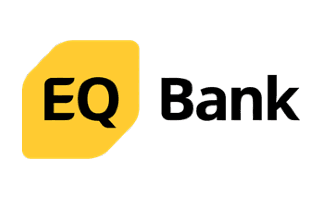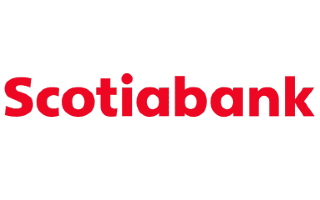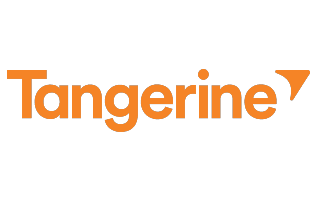
- Earn up to 2.75% interest for 12 months
- Unlimited free transactions
- $0 account fee
- Zero everyday banking fees
- No min. balance required
- CDIC protection for balances up to $100,000
A home is one of the largest and most exciting purchases you’ll likely ever make in your life. Whether you’re a first-time buyer or planning your next move, learning how to budget for a new home can help you avoid costly surprises and reduce financial stress. This guide teaches you how to budget for a new home, hidden homeownership expenses to watch out for and tips to help you reach your goal.
How much do you expect to pay for your new house? Research the cost of homes in the area you want to live in and determine how much you can realistically afford.
Gather every piece of information you can on your current financial picture. Look at your savings, mandatory monthly expenses, discretionary spending, debts, investment accounts and more. Having a clear picture of these items allows you to create a realistic plan for how to budget for a new home.
Add up all your income. Then, add up all your expenses. Subtract your total expenses from your total income. If the number is positive, congratulations – you’re spending less than you make. If it’s negative, you’ll need to cut back on your spending in order to put money toward your home goal.
If you end up with extra money in your budget, put it to work. Dedicate a certain amount toward saving for a home, while also building your emergency fund and paying off any debts.
Choose which bank account you’ll store your savings in every month until you can purchase your home. Here’s where it becomes important to choose a savings account that earns interest, because this is free money going toward your goal of homeownership.
Depending on how far away you are from your goal of owning a house, you may want to consider an investment account instead so your cash can grow faster. Keep in mind that a savings account keeps your money liquid, while a (low-risk) investment account is still invested in the market, so this option is only ideal if you have a solid chunk of time to save before you plan to access the money.
If you have some time before you need to access your savings to buy your home, you may want to look into investing the funds in your RRSP. The government offers the Home Buyer’s Plan, which allows you to withdraw from your RRSP early without paying withholding tax, as long as you’re using the funds to pay for your first home.



Once you’ve chosen your bank account, set up automatic payments. If you know you’ll save $500 every month, for example, have $500 automatically deposited into your savings account. This takes the guesswork and pressure off of having to do it yourself.
By proactively reviewing your budget, you’re able to adjust your plan as needed so you don’t lose track of your goals. If any major events happen, like a raise or a drop in the housing market, re-evaluate again.
A First Home Savings Account (FHSA) is a registered savings account that the Canadian government created to help first-time homebuyers grow their savings tax-free. You can open this account with most traditional banks, as well as some digital banks like EQ Bank.
Once you have an FHSA, you can start contributing to it as soon as you want. Your FHSA contribution room is $8,000 each year, with a lifetime maximum of $40,000. You can carry forward any unused contribution room to the following year.
Your contributions are tax-deductible, will grow tax-free and remain tax-free when you withdraw them. This triple-tax advantage means you can save a down payment faster. Many financial institutions even offer flexible investment options to keep in your FHSA, such as mutual funds, stocks and ETFs to grow your savings even more.
While housing costs may vary, the down payment will be the biggest upfront cost for your home. The minimum down payment you’ll need depends on the cost of the home you want to buy. Some institutions may also require a higher down payment if you’re self-employed or have a low credit score. The minimum down payment you can afford depends on your income and savings.
There are 3 tiers that determine the minimum down payment required:
If your down payment is less than 20.00%, your loan is considered a “high-ratio mortgage” and you’ll need to pay for mortgage loan insurance. This additional insurance provides the lender protection should you default on your mortgage. Because mortgage loan insurance is commonly obtained through the Canada Mortgage and Housing Corporation, it’s often referred to as CMHC insurance.
Even with a 20.00% down payment, lenders may require you to purchase mortgage loan insurance if your credit score is low or if you’re self-employed. Premiums for mortgage loan insurance typically range anywhere from 0.60% to 4.50% of your mortgage.
This varies based on your unique circumstances, but most professionals recommend spending no more than 30% of your gross monthly income on housing costs. This percentage includes mortgage payments, insurance, property taxes and any homeowners’ association fees.
This popular budgeting rule states that you should spend no more than the following:
The down payment isn’t the only cost you’ll have to pay out in order to purchase a home. Some other important costs you’ll need to add to your budget are:
Closing costs are a combination of various legal or administrative fees. These could include the cost of a lawyer to prepare and notarize official documentation and a “land transfer tax” to register the property in your name.
The land transfer tax can usually be anywhere from 0.5% to 4.0% of the cost of your home, depending on your province or territory. Total closing costs usually run anywhere from 1.50% to 4.00% of the cost of the home, depending on your lender.
This means if you purchase a home for $300,000.00 with a 3.00% closing cost, you’ll pay $9,000.00 upfront — on top of the down payment.
Various other taxes may also apply. For example, if you’re buying a newly built home, you’ll have to pay either GST or HST when you purchase it. Applicable taxes will vary depending on the conditions of the sale and the legislation in your province or territory.
Once you find a home, you’ll want to have it professionally inspected for any potential issues. Inspection costs vary by location and size of the home.
Once you purchase a house, there are recurring expenses to budget for besides your monthly mortgage payment:
Consider the size and age of your home when budgeting for repair costs. If you buy an older home, you may want to budget more per month than you would for a brand new home. If your air conditioner broke, for example, it could cost around $5,000 to replace it.
This includes any recurring monthly costs such as lawn care, pest control, pool care and fireplace upkeep.
An average-sized household can spend around $4,800 a year on utilities. Similar to maintenance and repairs, your utilities could be more depending on the age and size of your house and how many people will be living in the house. Newer houses will tend to be better insulated for temperature control and be fitted with more energy-efficient lighting and appliances, all of which help reduce your utility expenses in the long run. Be realistic when budgeting for these new expenses.
You’ll have to pay this tax yearly, usually in a single lump sum or as monthly installments. You’ll typically need to pay between 0.5% and 2.64% of the value of your home, but the exact amount will be determined by the municipality of the province or territory where you live.
It’s a good idea to get home insurance to protect your home and valuable belongings from unexpected damage like theft or fire. The cost of property insurance will vary depending on the value of your home and its insured contents, as well as which insurer you choose to go with.
There are other methods that can help you cover costs or accelerate savings, such as:
When choosing an account to save for a home, consider factors like interest rates, fees, accessibility and account features. Look for a high-interest savings account or a TFSA that offers competitive interest to help your money grow faster.
Here are some savings accounts from the best banks in Canada to consider.
To make comparing even easier we came up with the Finder Score. Interest rates, account fees and features across 50+ savings accounts and 25+ lenders are all weighted and scaled to produce a score out of 10. The higher the score the better the account - simple.
Deciding to purchase a home is an exciting time, but being financially prepared is crucial. Before you begin working on your budget, consider comparing bank accounts that accrue interest and allow you to save for your house automatically. Once you have enough money saved up to make your next move, check out our guide to mortgages in Canada.
From a 4% to a 5% interest savings account, here’s how to find the best savings rates in Canada.
Compare current savings account interest rates so you can grow your savings.
Earn a high interest rate on your savings with no minimum deposit requirements and no monthly fees with the Neo Money Account.
Your guide to how TFSAs and RRSPs work, and how to choose the right account for your savings goals.
Explore how to create an emergency fund in Canada and where to grow your savings.
Maximize your savings with a TFSA, enjoying tax-free growth, flexible withdrawals and diverse investment options.
Start saving for your retirement at any age by learning about registered retirement savings plans.
Compare the best high-interest savings accounts in Canada to build a bigger bank balance.
Find out about competitive interest rates, minimal fees and other perks you can enjoy when you bank at a nonprofit institution.